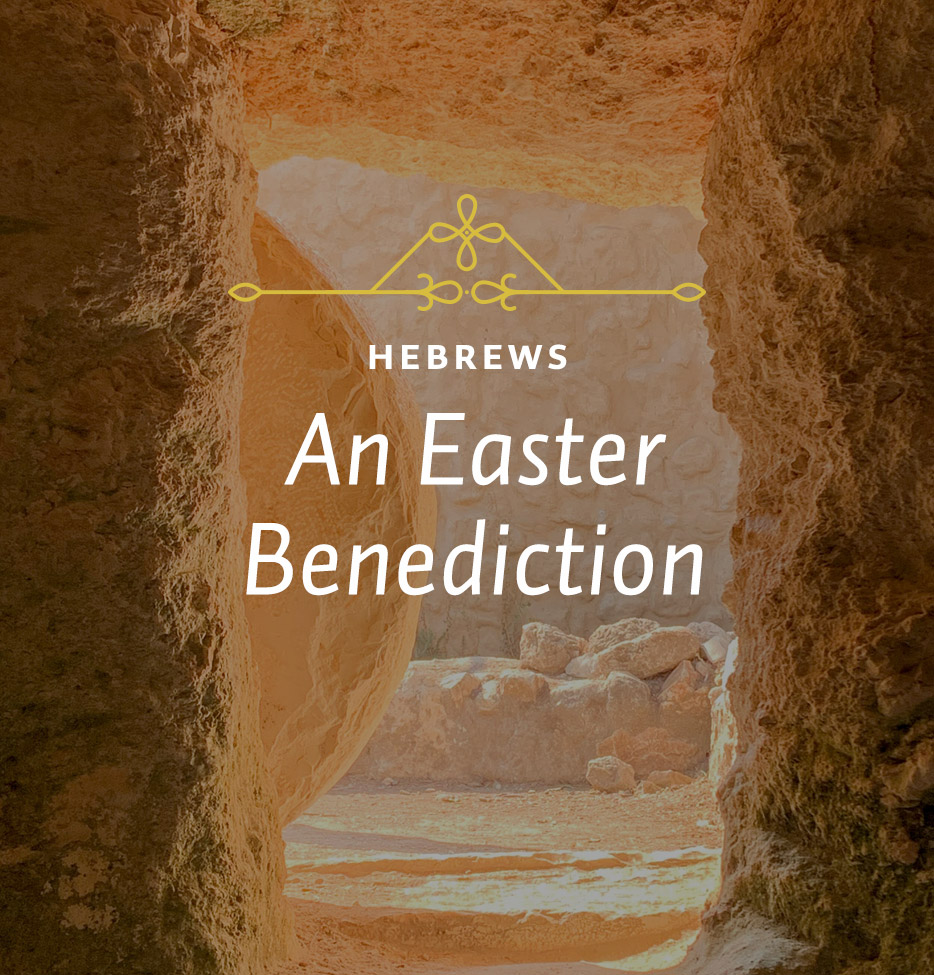I don’t know what portion of the Easter story will be most preached on this Easter across this country and around the world–whether it will be that story of Mary Magdalene coming to the tomb in the garden early in the morning and having that first meeting with the resurrected Lord, or whether it will be the story of the Emmaus disciples, where Jesus appeared to them on the road back to their home after they were leaving Jerusalem, discouraged because the One they thought was going to be the Redeemer had been killed. Or perhaps it is the story of Thomas, who did want to believe but was sure that dead men don’t rise, who said he wouldn’t believe unless he actually could put his finger into the holes in Christ’s hand, and then had that meeting with Jesus and fell on his knees before Him with that first great Christian confession, “My Lord and my God.”
Whatever text is most used, I do know what benediction will be most used in churches around the world this Easter Sunday. It’s the benediction we have at the end of Hebrews 13, verses 20 and 21. And the reason I’m sure that will be the benediction most used is that it’s the only strictly resurrection benediction in the New Testament. There we read: “May the God of peace, who through the blood of the eternal covenant brought back from the dead our Lord Jesus, that great Shepherd of the sheep, equip you with everything good for doing His will, and may He work in us what is pleasing to Him, through Jesus Christ, to whom be glory for ever and ever.” What a great benediction that is!
All of the benedictions in the Bible are great because they pronounce a blessing on the people of God based upon the attributes of God. But this benediction is particularly strong. It has an abundance of doctrine and a wealth of spiritual treasures. Charles Haddon Spurgeon loved it. He said, “It has within it the whole compass of the gospel. It is condensed spiritual meat, much in little, all things in one blessing.” Arthur Pink thought it was great as well. In his expositions on Hebrews he said, “The substance of the whole doctrinal portion of the epistle to the Hebrews is included in it, and it’s a fitting conclusion to the whole.” Now that’s what I’d like to look at—this comprehensive benediction, which has at its very heart the doctrine of the resurrection.
Now, it has the form of a collect. Most people in evangelical churches don’t know what a collect is because they’re not used much in evangelical churches today. But if you come from a church with a liturgical background, or if you’ve had any experience with liturgical worship, you’ll know what I’m talking about. A collect is a certain stylized kind of prayer. There are many of them, and they’re written into the liturgies of the churches. And in some of those churches, the best theology you ever hear is in the collect.
The form of a collect goes like this. First of all, there is an invocation—that is, an address to God—and it usually brings forward one or more of His attributes. In this case the invocation is, “May the God of peace.” Secondly, by means of a subordinate adjectival clause, there is a ground upon which the petition will be based. That refers to something God has done or is doing or something we can count upon Him to do. In this case it says, “through the blood of the eternal covenant brought back from the dead our Lord Jesus, that great Shepherd of the sheep.” And then, thirdly, there’s the petition itself. In this case there are two petitions: one, that God would equip us; and, second, work in us to do His will and to please Him. The fourth part of a collect is a doxology, or praise to God, and then, finally, there is an “Amen.”
Using this as our outline, we will first look at the invocation. In this case, as I said, it’s a reference to God as the God of peace. This is a wonderful phrase, and you find it throughout the New Testament. But in order to understand it and appreciate it, you have to see it against the dark background of sin and God’s wrath against evil. If you don’t see it against that background, you might think of peace in a weak sort of way, as if God is just placid or calm. When the first Europeans crossed the southernmost portions of South America and gazed on the Pacific Ocean for the first time, they called it “Pacific” because it seemed peaceful. The word comes from the Latin word, pax (meaning “peace”). Of course, they had never been on the Pacific Ocean in a storm; they just happened to see it on a good day. But God isn’t peaceful that way.






